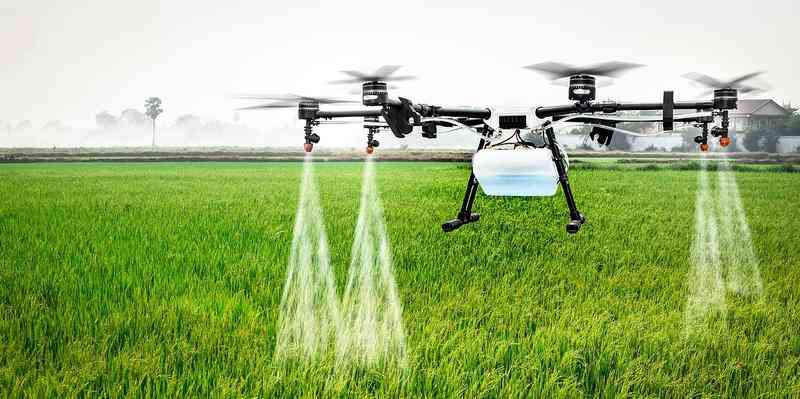
The 26th annual Southern Africa Climate Outlook Forum (SARCOF-26) hosted virtually by the Sadc Climate Services Centre (CSC) between August 24 and 26 2022, and consensus outlook from climate experts reveals that the Sadc region is likely to receive above-average rainfall throughout the 2022/23 agriculture season. Before we investigate the implications of the promising predictions, we look at the hits and misses of past forums.
SARCOF-21 was on the mark after correctly predicting normal to above-normal rainfall for the 2017/18 rainfall season. The normal to below-normal rainfall pattern in the 2018/19 season also tallied with SARCOF-22 consensus but this was subsequently reviewed by the Sadc CSC mid-season, particularly in forecasts pertaining to the bulk of Angola, Zambia, southeastern DRC, southern half of Tanzania, Malawi, Mozambique, Eastern Botswana, northern South Africa, Zimbabwe, south Madagascar as well as western coastal areas of South Africa and Namibia. SARCOF-23 predicted an increased chance of normal to above-normal rainfall in Zimbabwe, but the 2019/20 agricultural season was marked by a delayed onset of the rainy season and a false start throughout Zimbabwe due to continued drought-like conditions.
Predictions made at SARCOF-24 proved to be accurate, especially in Zimbabwe which recorded one of its best agriculture seasons in the last two decades between 2020 and 2021. SARCOF-25 consensus was somewhat misplaced as rainfall in Zimbabwe’s scattered and erratic rainfall in the 2021/22 resulted in less-than-expected yields. Given that SARCOF has been a good predictor of rainfall more often than not, the latest SARCOF report sets a solid foundation for the 2022/23 agriculture season as well as the energy sector. That said, we opine that the 2022/23 season could be a lost season because of several headwinds that include unpalatable GMB purchase prices for grains harvested in the 2021/22 season and a surge in fertiliser prices.
The continued depreciation of the local currency has resulted in a sustained decline in the value retained by farmers after selling to the GMB given the largely static prices. The maize price, for example, was revised to ZWL$100 000 per tonne plus US$90 at the beginning of August 2022, but the local currency has depreciated by 23% on the official market since the announcement was made while month-on-month inflation in August was 12,4%. This has been compounded by the surge in fertiliser prices because of the ongoing Russia-Ukraine conflict.
We identify a few listed companies in the Food and Agriculture sector that could be affected this coming season. SeedCo Limited is a leading seed manufacturer whose sales have been negatively affected by government interference in strategic grains such as maize and wheat. Further, the business model does not generate adequate foreign currency, and this has limited its ability to hedge against costs that are pegged at parallel market rates. SeedCo International, however, is likely to experience less government interference in its regional markets and management expects positive sales volumes growth in the coming season. However, increased extreme weather events such as droughts and floods will constrain the rebound in sales volumes.
Hippo Valley Estates, the country’s largest sugar producer and miller, also mills sugarcane from outgrowers in the area and these farmers accounted for 47% of total sugarcane milled by Hippo in FY22. The contribution from these farmers increased from 38% in the prior year because of Project Kilimanjaro which has seen 4 000 ha of sugarcane being dedicated to sugarcane in Chiredzi. Sugarcane farmers largely depend on irrigation, and the expected rainfall will sustain current water levels at Tugwi-Mukosi and Mutirikwi dams of 97% and 98%, respectively.
The rainfall outlook also warrants positive expectations pertaining to the country’s power generation capacity. Zimbabwe’s energy mostly comes from hydroelectricity, which generated 58% of the country’ total electricity in 2020 and 50% in 2021 according to the International Renewable Energy Agency (IRENA). Around 80% of the country’s total hydroelectricity comes from the Kariba Dam, and latest figures from Zimbabwe National Water Authority reveal that the dam has had the lowest levels among major dams in the country for the past two years. In the last four years, the Kariba Dam’s levels were highest in 2021 when the water level hovered around 43% of its total capacity. Latest data in September 2022 show a decline in the dam's water level to just 22%. We opine that the country’s demands for electricity amid archaic thermal power stations has driven an overreliance on the Kariba Dam for power, and this is evidenced by the significant decline in the dam’s water level in 2022.
A consecutive wet season in the region could improve Kariba Dam’s water levels which, in turn, could see an improvement in electricity supply in the country. The ripple effects of the improved power supply span into the mining and agriculture sector. One of the mining sector’s debilitating constraints has been power. Given the energy intensive nature of the sector’s operations, thermal and hydroelectricity remain the cheapest and most efficient sources of power considering the limitations of solar energy and the hefty cost burden of diesel-powered generators.
- SARCOF-26 springs hope in agric and energy sectors
- ‘Power cuts choke mines, industry’
- Zim braces for Cyclone Freddy
- Zela pokes holes into Mines Bill
Keep Reading
The agriculture sector will also benefit from the improved water levels through an increase in irrigation water as well as electricity for irrigation countrywide, especially for farmers on A1 farms and old settlement areas.
- Mtutu is a research analyst at Morgan & Co. — [email protected] or +263 774 795 854






